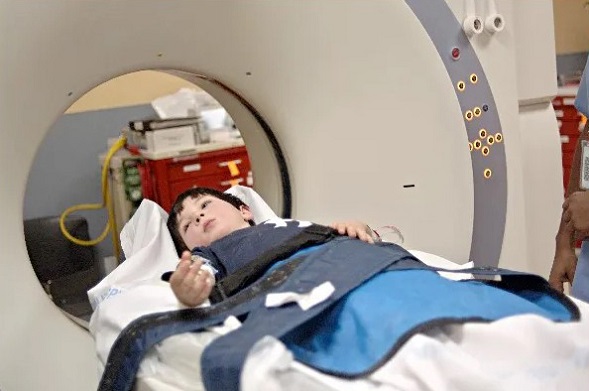Study Shockingly Finds That Medical Imaging Scans Increase Risk of Cancers in Children by Between 76 to 240 Percent!
Nikhil Prasad Fact checked by:Thailand Medical News Team Sep 23, 2025 3 months, 2 weeks, 1 day, 10 hours, 22 minutes ago
Medical News: Medical Scans and Hidden Dangers
A new large-scale study has found that medical imaging scans, especially those using radiation, may be linked to higher risks of blood cancers in children and teenagers. Researchers discovered that up to one in ten pediatric blood cancer cases could be tied to radiation from imaging procedures. This
Medical News report highlights why experts are calling for safer imaging practices to protect young patients.
 Study Shockingly Finds That Medical Imaging Scans Increase Risk of Cancers in Children by Between 76 to 240 Percent
Study Shockingly Finds That Medical Imaging Scans Increase Risk of Cancers in Children by Between 76 to 240 Percent
The research was carried out by teams from the University of California San Francisco, the University of California Davis, the National Cancer Institute, and six major healthcare systems in the United States and Canada. By following the health data of 3.7 million children born between 1996 and 2016, researchers identified nearly 3,000 cases of blood cancers. A clear association emerged between higher cumulative radiation exposure and greater cancer risk.
Why Children Are More Vulnerable
Radiation has long been recognized as a cancer-causing agent. Children, however, are particularly vulnerable because their developing bodies are more sensitive to radiation, and they have longer life spans ahead of them for potential health impacts to appear. The study showed that cancers of the blood, bone marrow, lymph nodes, and immune system rose in children who received higher doses from scans such as CT scans.
CT Scans Versus X-Rays
One of the major findings was the difference in cancer risk between CT scans and regular X-rays. CT scans deliver far higher doses of radiation because they are made up of multiple X-rays compiled to give detailed images. While CT scans can be lifesaving in emergencies—such as detecting bleeding, blood clots, or hidden tumors—the radiation exposure is significant. By comparison, a simple X-ray used for broken bones or chest infections produces a much lower dose and was linked to only a small fraction of cancers in the study.
The data revealed that children who had even one or two CT scans of the head, the most common target, faced an 80% increase in blood cancer risk. For children who received multiple scans, the risk more than tripled.
Measuring the Risk
The research team calculated that children exposed to a cumulative dose of 30 milligrays (roughly equivalent to two or three head CT scans) had a 76% higher chance of developing blood cancers compared to those with no exposure. The study found that CT scans accounted for about a quarter of all radiation-linked cancers, while X-rays played only a minor role.
How Risks Can Be Reduced
Experts stress that medical imaging should always be weighed carefully. While scans are sometimes essential for diagnosis and treatment, the study suggests that many cases could be avoided by reducing unnecessary imaging
and lowering the radiation doses used in pediatric care. Safer alternatives such as MRI or ultrasound, which do not rely on radiation, can sometimes replace CT scans.
Senior author Dr. Diana Miglioretti of UC Davis emphasized that the findings confirm children’s heightened sensitivity to radiation. She urged hospitals and doctors to ensure that scans are performed only when truly necessary and that protocols are adjusted to minimize radiation exposure.
The Bigger Picture
The implications of this study are significant. If hospitals worldwide adopt stricter imaging guidelines, up to 10% of pediatric blood cancers could potentially be prevented. This would mean sparing thousands of families from the devastating impact of childhood cancer.
The study makes it clear that the benefits of medical imaging must always be balanced against its risks. Parents and healthcare providers need to ask whether a scan is truly essential and, if so, whether lower-radiation methods or alternative technologies can be used instead. Protecting children from avoidable radiation exposure today could save countless lives in the years ahead.
The study findings were published in the peer reviewed journal: New England Journal of Medicine.
https://www.nejm.org/doi/full/10.1056/NEJMoa2502098
For the latest on cancers and medical imaging, keep on logging to Thailand
Medical News.
Read Also:
https://www.thailandmedical.news/news/study-alarmingly-finds-that-ct-scans-are-possibly-triggering-the-onset-of-cancers
https://www.thailandmedical.news/news/thailand-doctors-and-radiologists-find-that-siemens-and-neusoft-ct-scanners-outperform-philips-ct-machines
https://www.thailandmedical.news/news/breaking-medical-news-international-study-shows-that-young-individuals-who-got-ct-scans-have-an-increased-risk-of-developing-cancer
